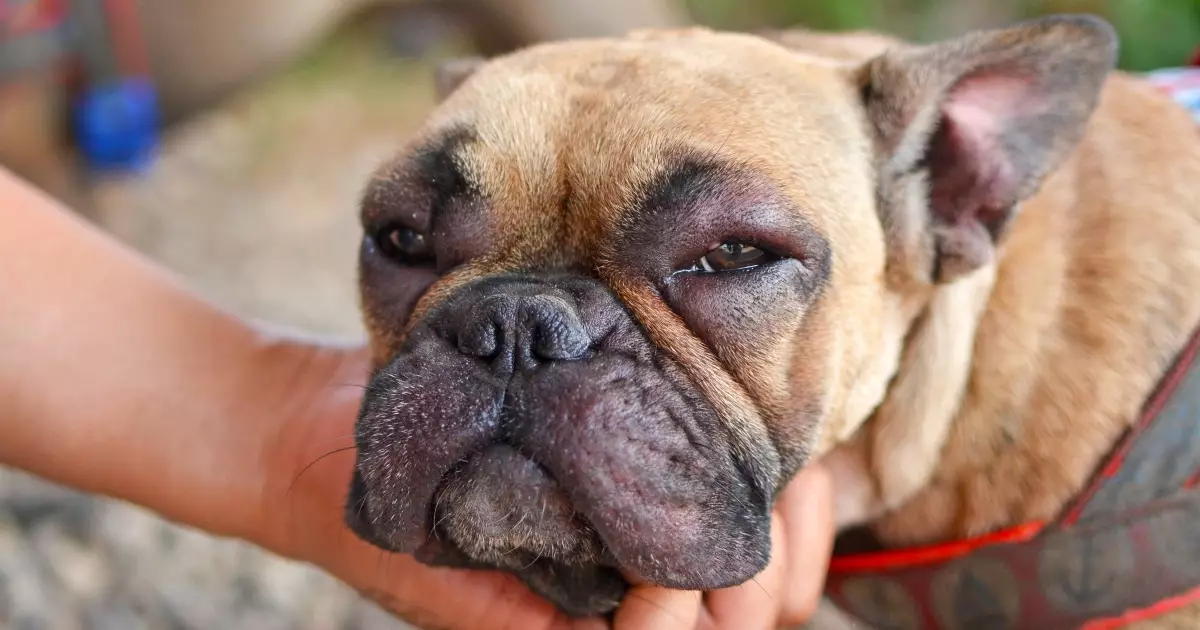It’s often said that dogs are man’s best friend, yet we sometimes overlook their silent struggles. Just like us, dogs can experience discomfort as a result of various irritants affecting their eyes. Dog owners may notice symptoms such as incessant pawing at their eyes, squinting, or even visible redness and discharge. While these indicators can be alarming, they are often more common than many believe and can arise from numerous factors, ranging from benign environmental stimuli to more severe health conditions. Recognizing and understanding what drives this irritation is crucial for pet owners hoping to provide immediate relief and prevent worsening conditions.
Behind the Tears: Common Causes of Itchy Dog Eyes
One of the most prevalent reasons dogs develop itchy eyes is due to allergies. Dogs can react negatively to a plethora of allergens, including but not limited to pollen, mold spores, and dust mites. In particular, seasonal allergies can exacerbate these reactions during specific times of the year. In addition to eye irritation, allergic reactions can lead to additional symptoms such as sneezing or skin rashes. As responsible pet owners, it is essential to recognize these patterns; in many cases, simply removing the allergen or administering prescribed antihistamines from a veterinarian can alleviate your dog’s discomfort.
Moreover, dry eye syndrome presents a significant challenge for many canines. This condition occurs when the tear glands fail to produce adequate moisture, leaving the eyes prone to irritation. The consequences of untreated dry eye can be severe, leading to inflammation and potentially serious complications such as corneal ulcers. Identifying the root cause is critical; in some instances, immune system issues or trauma may be to blame. Early intervention, often involving specific medicated drops, can be imperative in safeguarding your furry friend’s eyesight.
The Hidden Dangers: Foreign Bodies and Infections
Dogs are naturally curious creatures, often leading them on adventurous escapades where foreign particles—like dust, grass, or tiny debris—can strike their sensitive eyes. The immediate discomfort from such an intruder can drive a dog to blink excessively or rub their eyes vigorously. Pet owners should remain vigilant; if the irritation persists and a foreign body does not dislodge easily, seeking veterinary assistance becomes imperative to prevent lasting damage.
Moreover, bacterial, viral, or fungal infections can wreak havoc on a dog’s eye health. Conjunctivitis, commonly known as pink eye, is particularly notable for causing swelling and significant discomfort. It’s essential to recognize that symptoms such as thick, discolored discharge indicate a serious infection that warrants a veterinarian’s care without delay. Proper and timely medical treatment can mean the difference between swift recovery and serious complications.
Physical Conditions: The Role of Eyelid Abnormalities
In some breeds, structural eye issues can add another layer of difficulty. Conditions like entropion and ectropion—where the eyelids roll inward or outward—can lead to chronic irritation for the affected dog. Breeds such as Bulldogs and Cocker Spaniels are particularly susceptible to these conditions. While minor cases can sometimes be managed with lubricants, serious instances may necessitate surgical intervention to restore comfort and proper eyelid function.
At-Home Remedies: Soothing Your Dog’s Eye Discomfort
For minor irritations, there are several proactive steps pet owners can take to soothe their dog’s eyes at home. One effective remedy is using a sterile saline eye rinse to gently flush out potential irritants. Another simple solution involves applying a cool, damp cloth to the affected area to alleviate swelling and discomfort. Maintaining cleanliness around the eyes by gently wiping away any discharge can also promote comfort and hygiene. However, it’s crucial to monitor behavior closely; if pawing or discomfort escalates, enlisting the help of a veterinarian is indispensable.
When to Seek Professional Assistance
Though there are certainly at-home treatments available, many conditions necessitate professional evaluation to prevent worsening issues. If symptoms last beyond 24-48 hours, or if there are signs of severe discharge, persistent squinting, or pain, consulting a veterinarian is vital. This professional intervention typically includes comprehensive testing to ascertain the exact cause behind the eye irritation, ensuring that your beloved pet receives appropriate care. Keeping a close eye on their overall well-being is essential; vigilance not only helps in addressing immediate concerns but also contributes to your dog’s long-term health and happiness.


Leave a Reply